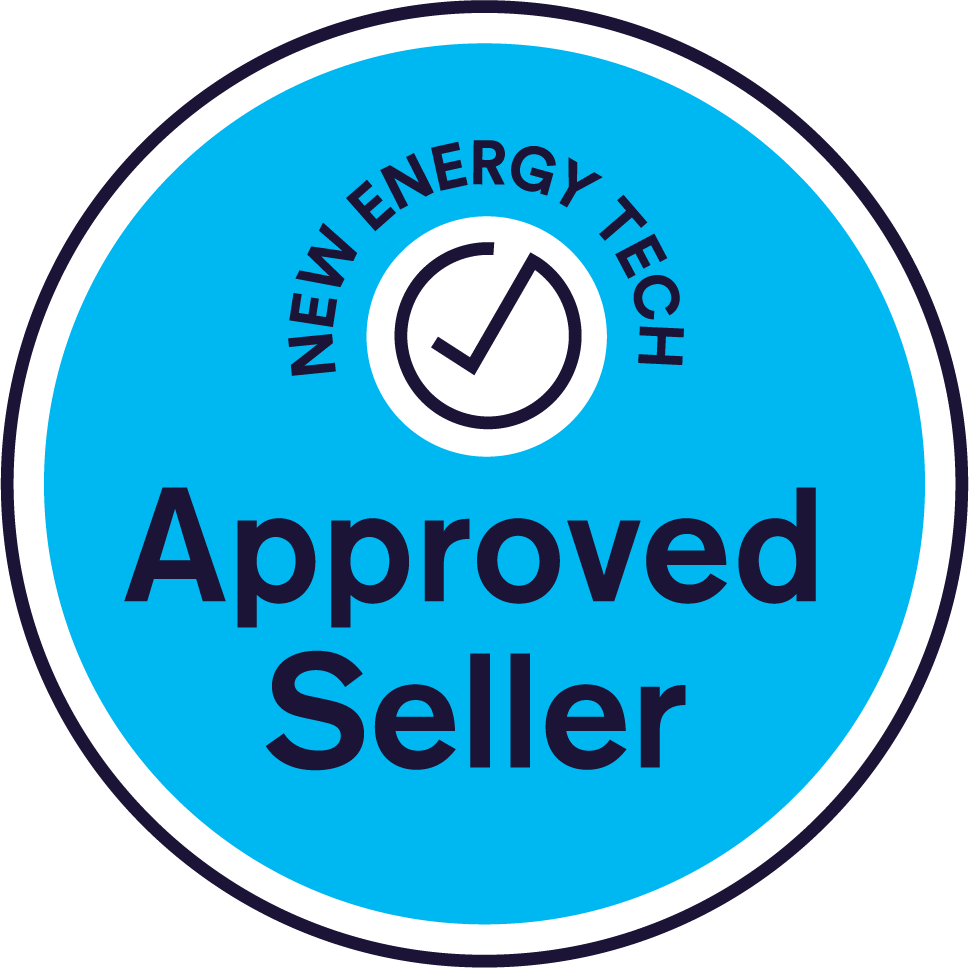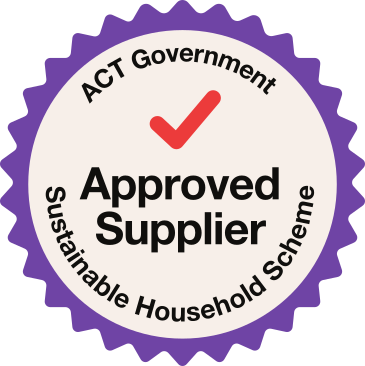The Ultimate Guide to Solar Heat Pumps: Sustainable Heating and Cooling
Introduction: Harnessing the Sun for Comfort with Solar Heat Pumps
Imagine a system that not only heats your home in the chilly months but also keeps it cool during scorching summers, all while significantly reducing your energy bills and carbon footprint. This isn't a futuristic fantasy; it's the reality offered by solar heat pumps. Combining the renewable energy of the sun with the efficient technology of heat pumps, these systems are revolutionizing how we think about climate control. This comprehensive guide will explore every facet of solar heat pumps, empowering you with the knowledge to make informed decisions about adopting this sustainable solution.
Understanding the Basics: What Exactly Are Solar Heat Pumps?
At their core, solar heat pumps are integrated systems that utilize solar energy to power a heat pump. A heat pump works by transferring heat from one place to another, rather than generating it directly. In heating mode, it extracts heat from an outdoor source (even cold air) and moves it indoors. In cooling mode, it reverses this process, drawing heat from inside and releasing it outside. By integrating solar panels, solar heat pumps can significantly offset or even eliminate the electricity needed to run the heat pump, leading to substantial energy savings and environmental benefits.
The Synergy: How Solar Panels Power Heat Pumps
The magic of solar heat pumps lies in their symbiotic relationship. Solar photovoltaic (PV) panels convert sunlight into electricity. This electricity can then directly power the heat pump. Excess electricity generated by the solar panels can be stored in batteries for later use or fed back into the grid, potentially earning you credits. This direct utilization of solar energy makes solar heat pumps incredibly efficient and reduces reliance on traditional electricity sources.
Different Types of Solar Heat Pump Systems
The world of solar heat pumps isn't one-size-fits-all. Several configurations cater to different needs and climates:
- Direct Coupled Systems: In these systems, the solar PV array is directly connected to the heat pump. When the sun is shining, the heat pump primarily runs on solar power. This is often the most efficient setup but requires careful sizing of both the solar array and the heat pump.
- Grid-Tied Systems with Net Metering: Here, the solar panels are connected to the grid. The heat pump draws power from the grid as needed, and any excess solar energy is sent back to the grid, earning credits that offset electricity consumption. This offers more flexibility and ensures a consistent power supply.
- Off-Grid Systems with Battery Storage: For locations without grid access, solar heat pumps can be paired with battery storage. The solar panels charge the batteries, which then power the heat pump. This provides energy independence but requires a larger investment in batteries.
- Solar Thermal Assisted Heat Pumps: These systems integrate solar thermal collectors, which directly heat a refrigerant or water that assists the heat pump in its operation, potentially increasing efficiency, especially in heating mode.
The Environmental Advantages of Choosing Solar Heat Pumps
Opting for solar heat pumps is a significant step towards a greener future. Their environmental benefits are compelling:
- Reduced Carbon Footprint: By utilizing renewable solar energy, solar heat pumps significantly decrease reliance on fossil fuel-based electricity generation, leading to lower greenhouse gas emissions.
- Lower Energy Consumption: Heat pumps are inherently more energy-efficient than traditional heating and cooling systems. When powered by solar energy, their energy consumption from the grid can be drastically reduced or even eliminated.
- Sustainable Solution: Solar heat pumps offer a long-term, sustainable solution for climate control, utilizing a virtually inexhaustible energy source.
- Reduced Air Pollution: By decreasing the need for fossil fuel combustion, solar heat pumps contribute to cleaner air quality.
Cost Savings: The Financial Benefits of Solar Heat Pumps
While the initial investment in solar heat pumps might seem substantial, the long-term cost savings can be significant:
- Lower Energy Bills: The most direct saving comes from reduced or eliminated electricity bills for heating and cooling.
- Government Incentives and Rebates: Many governments and local authorities offer incentives, tax credits, and rebates for installing solar energy systems and energy-efficient heat pumps, which can significantly offset the initial cost.
- Increased Property Value: Homes equipped with solar heat pumps are often more attractive to buyers, potentially increasing property value.
- Reduced Maintenance Costs: Modern heat pumps are generally reliable and require less maintenance than traditional furnaces and air conditioners.
Understanding Heat Pump Efficiency: SEER and HSPF
When evaluating solar heat pumps, it's crucial to understand their efficiency ratings:
- SEER (Seasonal Energy Efficiency Ratio): This measures the cooling efficiency of a heat pump. A higher SEER rating indicates greater energy efficiency during cooling.
- HSPF (Heating Seasonal Performance Factor): This measures the heating efficiency of a heat pump. A higher HSPF rating indicates greater energy efficiency during heating.
Choosing a solar heat pump with high SEER and HSPF ratings will maximize your energy savings.
Factors to Consider When Choosing a Solar Heat Pump System
Selecting the right solar heat pump system requires careful consideration of several factors:
- Climate: The climate of your location will influence the type and size of heat pump needed. Some heat pumps are better suited for colder climates than others.
- Home Size and Insulation: The size of your home and its insulation levels will determine the heating and cooling load and, consequently, the size of the heat pump and solar array required.
- Budget: Your budget will influence the type and size of the system you can afford, as well as the quality of components.
- Energy Consumption Patterns: Understanding your current energy consumption for heating and cooling will help in sizing the solar system appropriately.
- Available Space for Solar Panels: Ensure you have sufficient roof or ground space for the required number of solar panels.
Installation Process: What to Expect
The installation of solar heat pumps typically involves two main stages:
- Solar Panel Installation: This includes mounting the panels on your roof or ground, wiring them, and connecting them to an inverter.
- Heat Pump Installation: This involves placing the indoor and outdoor units, connecting the refrigerant lines, and wiring the system to the electrical panel.
It's crucial to hire qualified and experienced installers for both the solar panels and the heat pump to ensure proper and safe installation.
Maintenance and Longevity of Solar Heat Pumps
With proper care, solar heat pumps can provide reliable heating and cooling for many years:
- Regular Maintenance: This includes cleaning the outdoor unit's coils, checking refrigerant levels, and inspecting electrical connections.
- Solar Panel Cleaning: Periodically cleaning the solar panels ensures optimal energy production.
- Professional Check-ups: Schedule annual professional maintenance to ensure the system is running efficiently and to identify any potential issues early.
- Lifespan: High-quality solar panels typically have a lifespan of 25-30 years, while heat pumps can last for 15-20 years with proper maintenance.
Integrating Solar Heat Pumps with Existing HVAC Systems
In some cases, homeowners might consider integrating solar heat pumps with their existing heating and cooling systems. This can be done in various ways, such as using the heat pump as the primary system and the existing system as a backup for extreme temperatures. Careful planning and consultation with HVAC professionals are essential for successful integration.
The Role of Smart Technology in Solar Heat Pump Systems
Modern solar heat pumps often incorporate smart technology for enhanced efficiency and convenience:
- Smart Thermostats: These learn your heating and cooling preferences and adjust automatically to optimize energy use.
- Energy Monitoring Systems: These provide real-time data on energy production and consumption, allowing you to track your savings and system performance.
- Remote Control: Many systems can be controlled remotely via smartphone apps, offering greater flexibility.
Overcoming Common Misconceptions About Solar Heat Pumps
Several misconceptions surround solar heat pumps:
- Myth: They don't work well in cold climates. Fact: Modern cold-climate heat pumps are designed to operate efficiently in very low temperatures.
- Myth: They are too expensive. Fact: While the initial cost can be higher, long-term energy savings and government incentives can make them cost-effective.
- Myth: They require a lot of maintenance. Fact: Regular maintenance is essential for any HVAC system, and solar heat pumps generally require similar levels of upkeep.
Real-World Applications and Success Stories of Solar Heat Pumps
Solar heat pumps are being successfully implemented in a wide range of applications:
- Residential Homes: Providing comfortable and energy-efficient heating and cooling for homeowners.
- Commercial Buildings: Reducing energy costs and carbon emissions for businesses.
- Agricultural Facilities: Maintaining optimal temperatures for livestock and crops.
- Educational Institutions: Creating sustainable and cost-effective climate control in schools and universities.
Numerous case studies highlight the significant energy savings and environmental benefits achieved by adopting solar heat pumps.
The Future of Solar Heat Pump Technology: Innovations on the Horizon
The technology behind solar heat pumps is constantly evolving:
- Improved Efficiency: Ongoing research and development are leading to even more efficient heat pumps and solar panels.
- Smart Grid Integration: Future systems will likely be more seamlessly integrated with smart grids, allowing for optimized energy management.
- Advanced Refrigerants: Environmentally friendly refrigerants with lower global warming potential are being developed and implemented.
- Hybrid Systems: Innovations in hybrid systems that combine solar PV, solar thermal, and heat pump technologies are emerging.
16. DIY Solar Heat Pump Installations: Considerations and Risks
While some homeowners might consider DIY installations to save costs, it's generally not recommended for solar heat pumps. These systems involve complex electrical, plumbing (refrigerant lines), and structural work. Improper installation can lead to safety hazards, reduced efficiency, and void warranties. Hiring certified professionals is crucial for a safe and effective installation.
Permitting and Regulations for Solar Heat Pump Installations
Before installing solar heat pumps, it's essential to understand the local permitting and regulations:
- Building Permits: Most jurisdictions require building permits for both solar panel and heat pump installations.
- Electrical Codes: Electrical work must comply with local and national electrical codes.
- Net Metering Agreements: If you plan to connect your solar system to the grid, you'll need to establish a net metering agreement with your utility company.
Researching and adhering to all relevant regulations is crucial to avoid legal issues and ensure a smooth installation process.
18. Financing Options for Solar Heat Pump Systems
The initial investment in solar heat pumps can be made more manageable through various financing options:
- Home Equity Loans: Leveraging the equity in your home can provide funds for the installation.
- Green Loans: Some financial institutions offer specialized loans for energy-efficient home improvements.
- Power Purchase Agreements (PPAs): In some cases, you can lease a solar system and pay for the electricity it generates.
- Government and Local Incentives: As mentioned earlier, grants, rebates, and tax credits can significantly reduce the upfront cost.
Exploring these financing options can make solar heat pumps more accessible.
Frequently Asked Questions (FAQ) About Solar Heat Pumps
- Q: How much do solar heat pumps cost?
- A: The cost varies depending on the size of the system, the type of heat pump, and local installation costs. However, long-term savings and incentives can offset the initial investment.
- Q: Are solar heat pumps noisy?
- A: Modern heat pumps are designed to operate quietly. Noise levels are typically comparable to or even lower than traditional air conditioners.
- Q: Can solar heat pumps provide hot water?
- A: Some solar heat pump systems can be integrated with domestic hot water systems, providing an energy-efficient way to heat water.
- Q: How long do solar panels last?
- A: Most high-quality solar panels come with a 25-30 year performance warranty.
- Q: What happens on cloudy days?
- A: Grid-tied systems can draw power from the grid when solar production is low. Off-grid systems rely on battery storage for such times.
- Q: Are solar heat pumps suitable for all climates?
- A: Modern cold-climate heat pumps are effective in a wide range of temperatures. However, extreme climates might require supplemental heating or cooling.
- Q: How much maintenance do solar heat pumps require?
- A: Regular maintenance includes cleaning the outdoor unit and solar panels, and annual professional check-ups are recommended.
- Q: What size solar panel system do I need for a heat pump?
- A: The size depends on the heat pump's energy consumption and your local solar irradiance. A professional assessment is necessary for accurate sizing.
- Q: Can I add solar panels to my existing heat pump?
- A: Yes, you can integrate solar panels with an existing heat pump. However, careful planning is needed to ensure compatibility and optimal performance.
- Q: What are the benefits of net metering?
- A: Net metering allows you to receive credits on your electricity bill for any excess solar energy you send back to the grid.
Conclusion: Embracing a Sustainable Future with Solar Heat Pumps
Solar heat pumps represent a powerful convergence of renewable energy and energy-efficient technology. By harnessing the sun's energy to power heat pumps, homeowners and businesses can significantly reduce their energy consumption, lower their carbon footprint, and achieve long-term cost savings. While the initial investment requires careful consideration, the environmental and economic benefits of solar heat pumps make them a compelling solution for a sustainable future. As technology continues to advance and government incentives become more widespread, solar heat pumps are poised to play an increasingly vital role in how we heat and cool our spaces.
Call to Action:
Ready to explore the possibilities of solar heat pumps for your home or business? Contact us a qualified solar and HVAC professional today for a consultation and take the first step towards a more sustainable and energy-efficient future!



